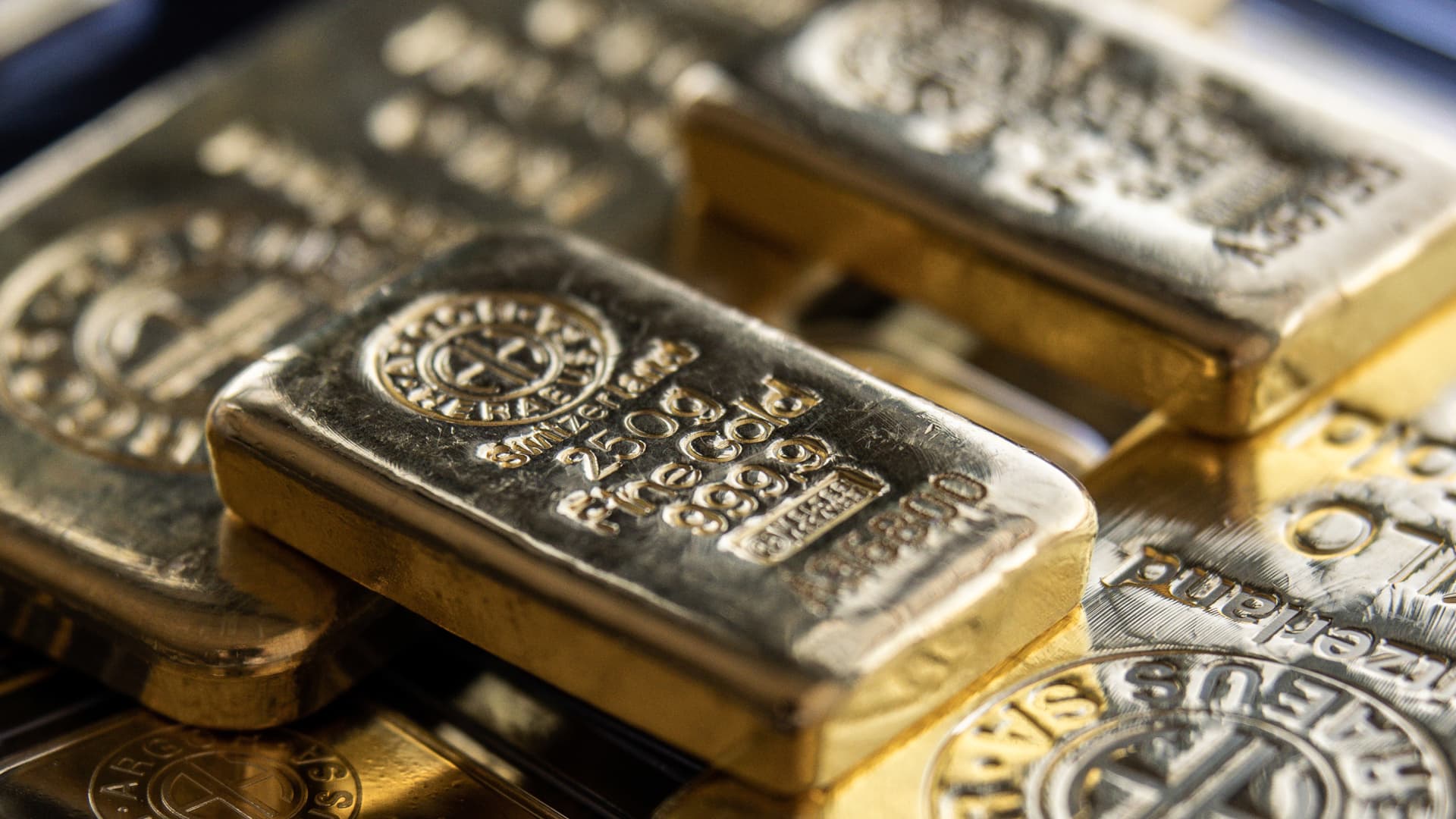
Gold has had a choppy year — but Goldman Sachs says the precious metal’s upside potential is currently significantly greater than the downside risks. Gold prices spiked from levels around $1,800 per ounce at the start of the year to around $2,000 in March, but have declined pretty steadily since then. Spot gold was trading around $1,650 an ounce on Tuesday. However, Goldman said there remains uncertainty ahead for gold prices. “Gold has had a choppy year torn between growth and inflation risks and higher real rates and the strong dollar,” Goldman analysts wrote in an Oct. 11 note. “In our view, there remains a lot of uncertainty around the future path of US inflation, growth, rates and the central bank (CB)’s reaction functions.” As such, the investment bank has therefore run four economic scenarios, and predicted where gold prices could end up in each case. A soft landing (Goldman gave this scenario a 30% probability): Gold prices could fall to $1,530 per ounce – an almost 8% decline from Tuesday’s price. In this scenario, U.S. inflation eases next year and the country avoids a recession. Goldman strategists also assume U.S. 10-year real rates at 1.7% — marginally above current levels. As U.S. growth concerns decline, investors would likely rotate out of safe-haven assets like gold and into equities. A recession with substantial rate cuts (30% probability): Gold prices spike to $2,250 per ounce – around 35% rally from Tuesday’s price. Under a more severe recession scenario, the U.S. Federal Reserve gradually cuts rates to zero by 2025. Goldman assumes the 10-year real rate drops by 1%, although it predicts a smaller fall due to a lower willingness to stimulate on inflation worries. Higher inflation, more hikes (20% probability): Gold prices could fall to $1,500 per ounce – around 9% drop from Tuesday’s price. This scenario indicates a path that continues the Fed’s war on inflation. Goldman assumes 10-year real rates rise another 1.5%, and recession concerns stay elevated. A recession with limited rate cuts (20% probability): Gold prices could rally to $2,000 per ounce – around 20% jump from Tuesday’s price. The Fed funds rate gradually falls to 2.5% by 2025 under this scenario, due to a shallow contraction and sticky inflation. “Growth concerns together with the fall in real rates should trigger a material rotation towards defensive assets,” Goldman wrote. The investment bank said that, in applying its growth and real rate trade-off model to these scenarios, it found that “gold’s upside potential is currently significantly greater than the downside risks.” “Our main finding is that elevated recession risks create a positive asymmetry in gold’s return profile. Namely, gold’s downside in the case of a ‘soft landing’ or further Fed hawkishness is significantly less than gold’s upside in the case of a growth shock that pushes the US economy into a recession,” Goldman wrote. For those considering investing in gold, CNBC Pro asked a slew of Wall Street strategists for their views earlier this month. Euro Pacific Capital’s Peter Schiff, believes investors should “seek refuge” in gold, which has served a “unique role” throughout history as a store of value. Whereas, hedge fund manager David Neuhauser — despite being a self-declared gold bull — said there was a “massive headwind” for the precious metal looking ahead.
